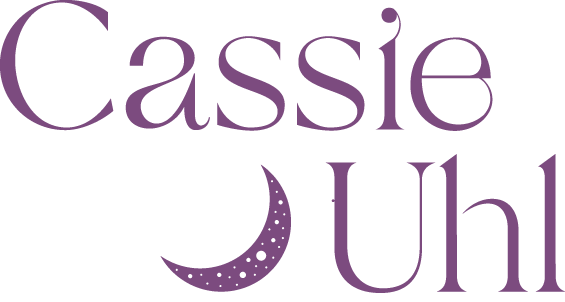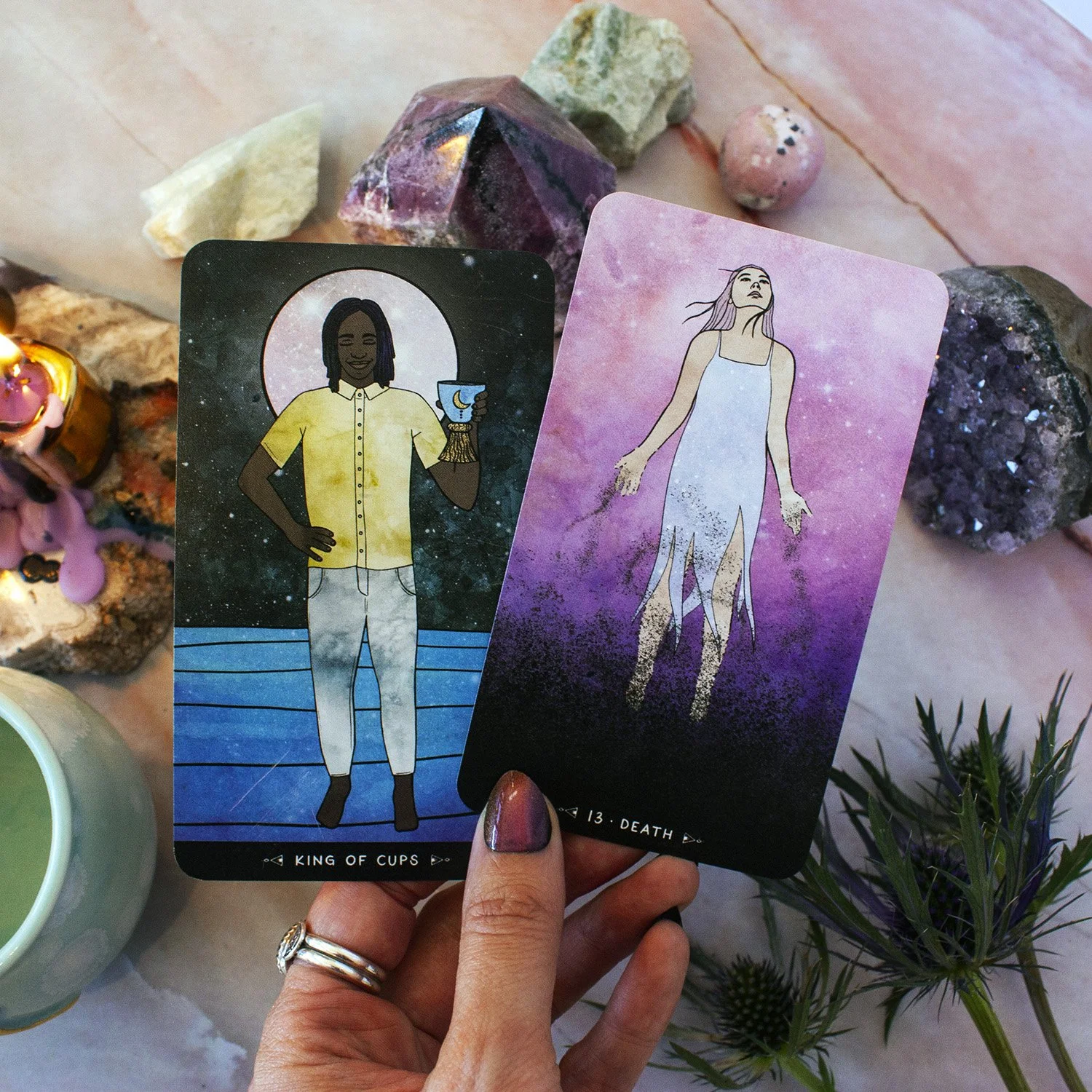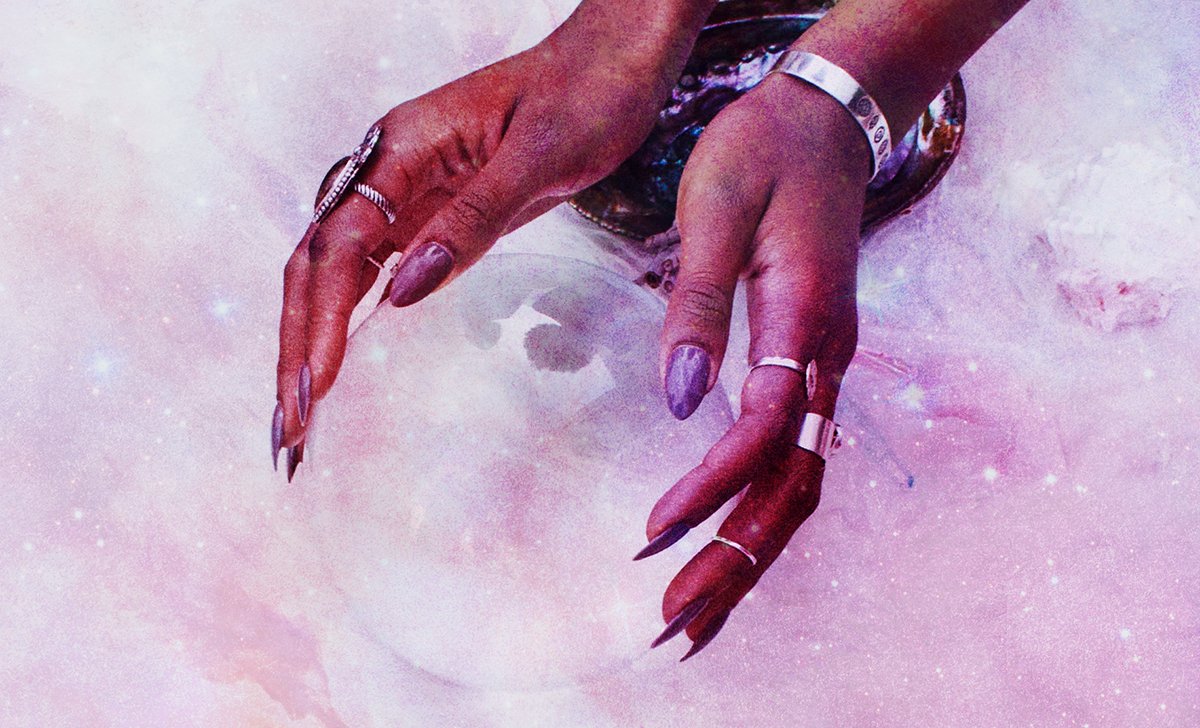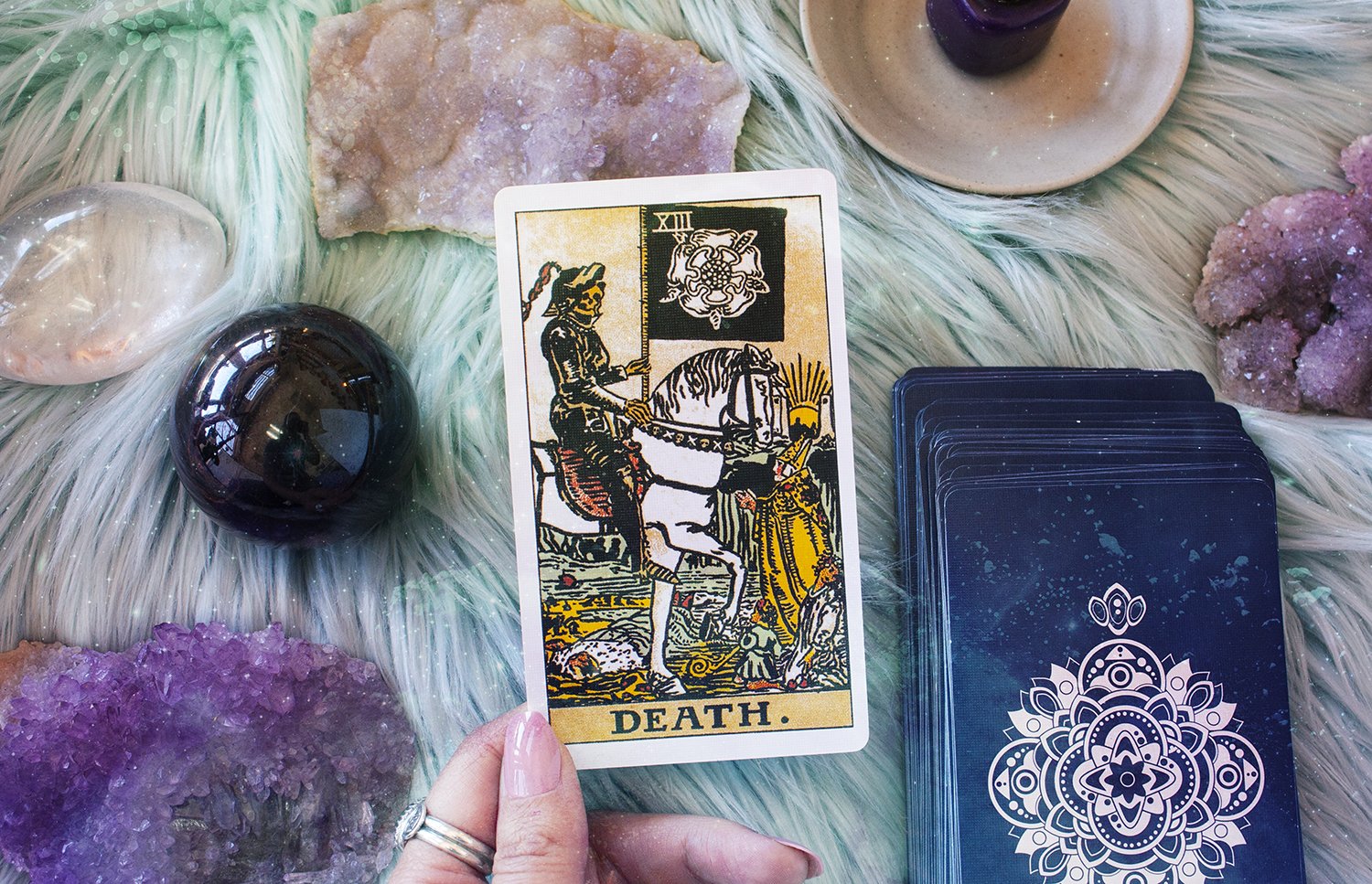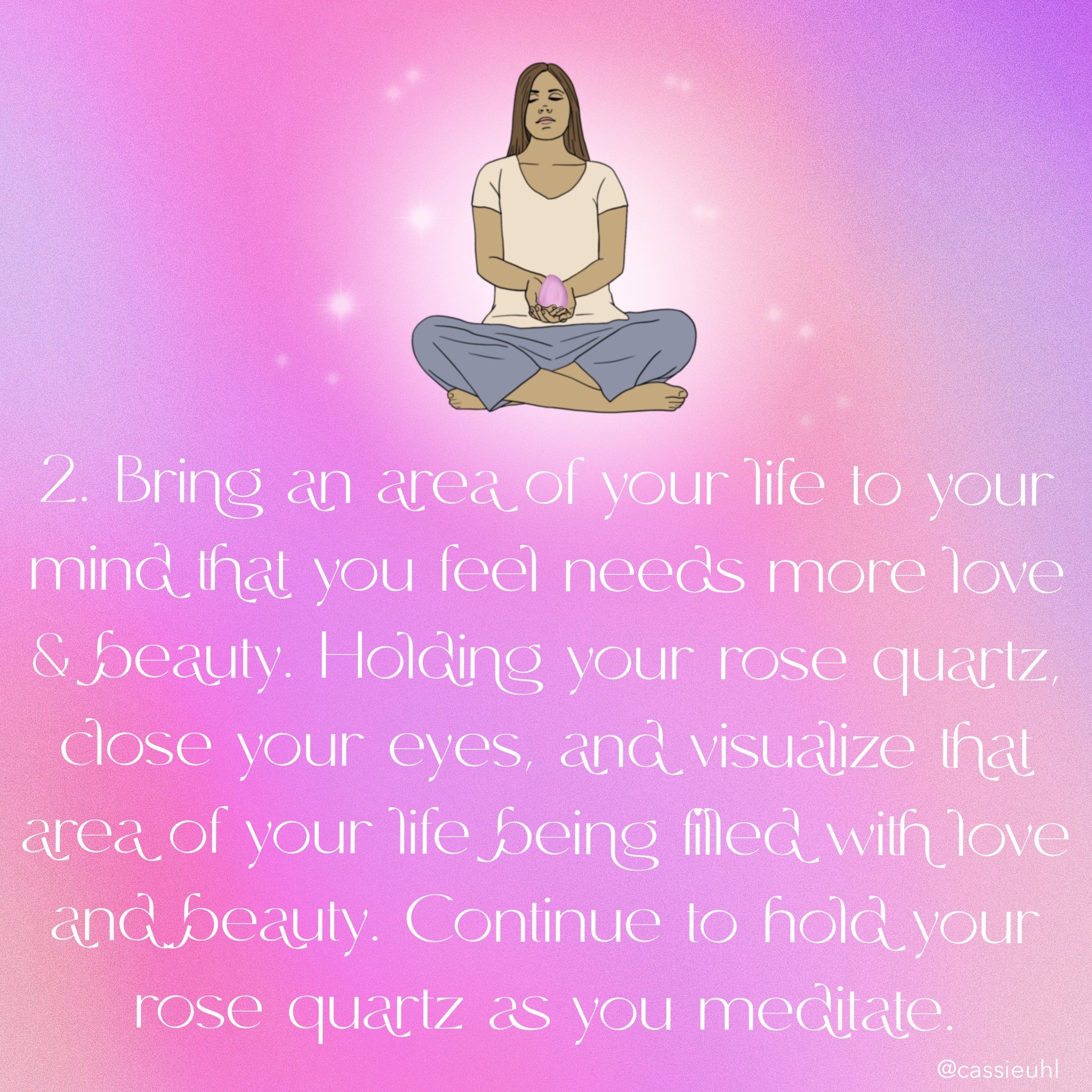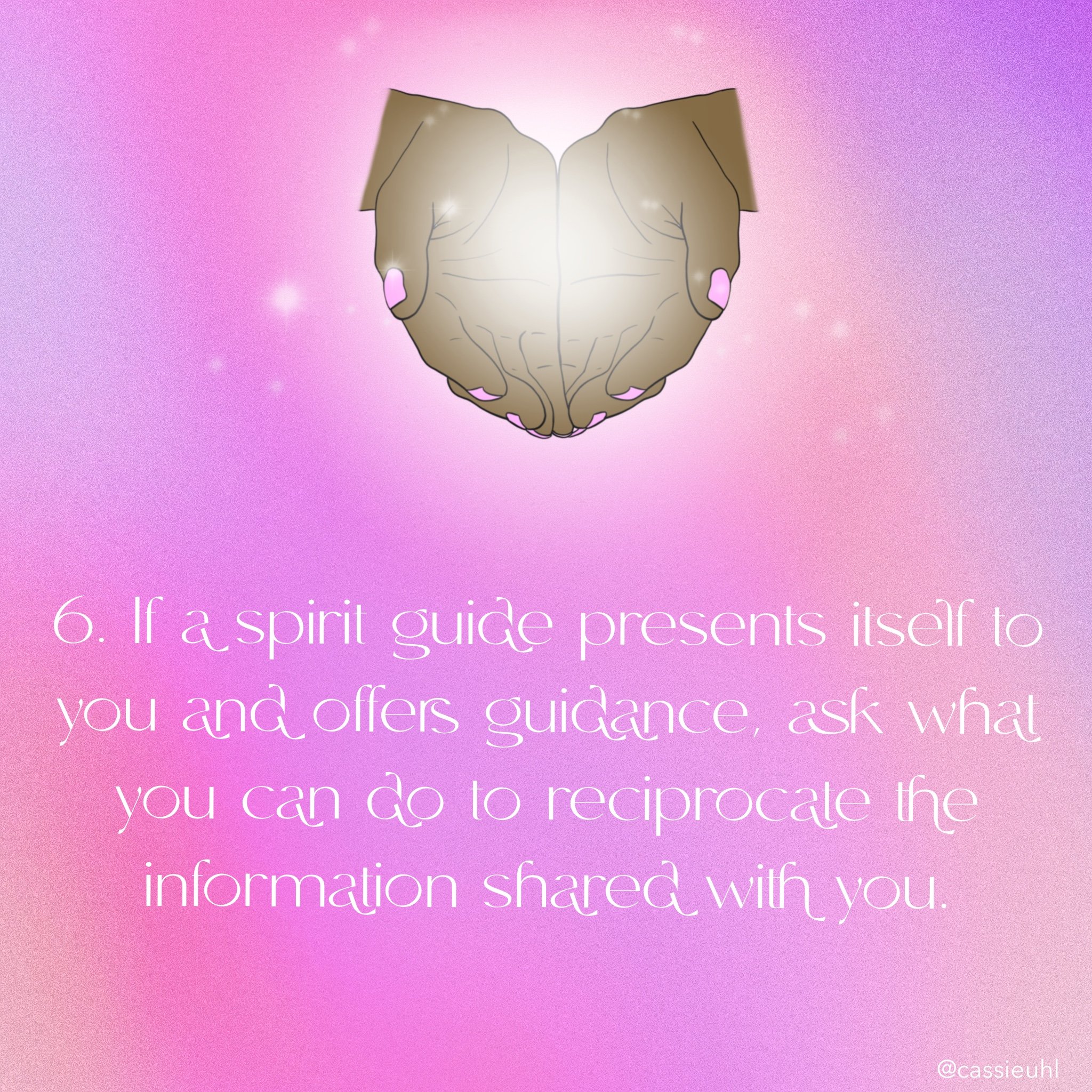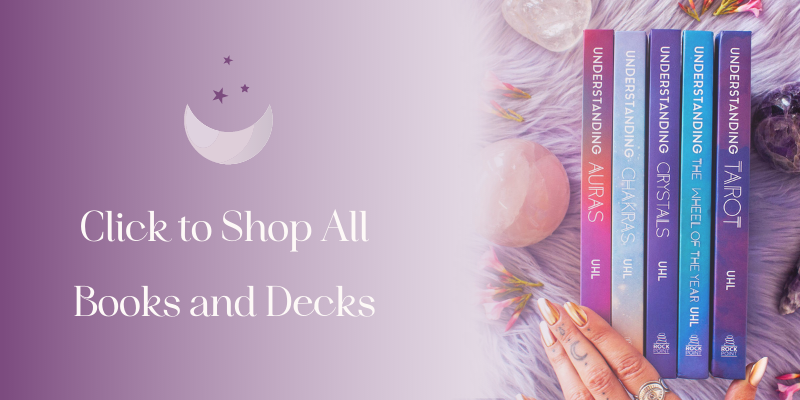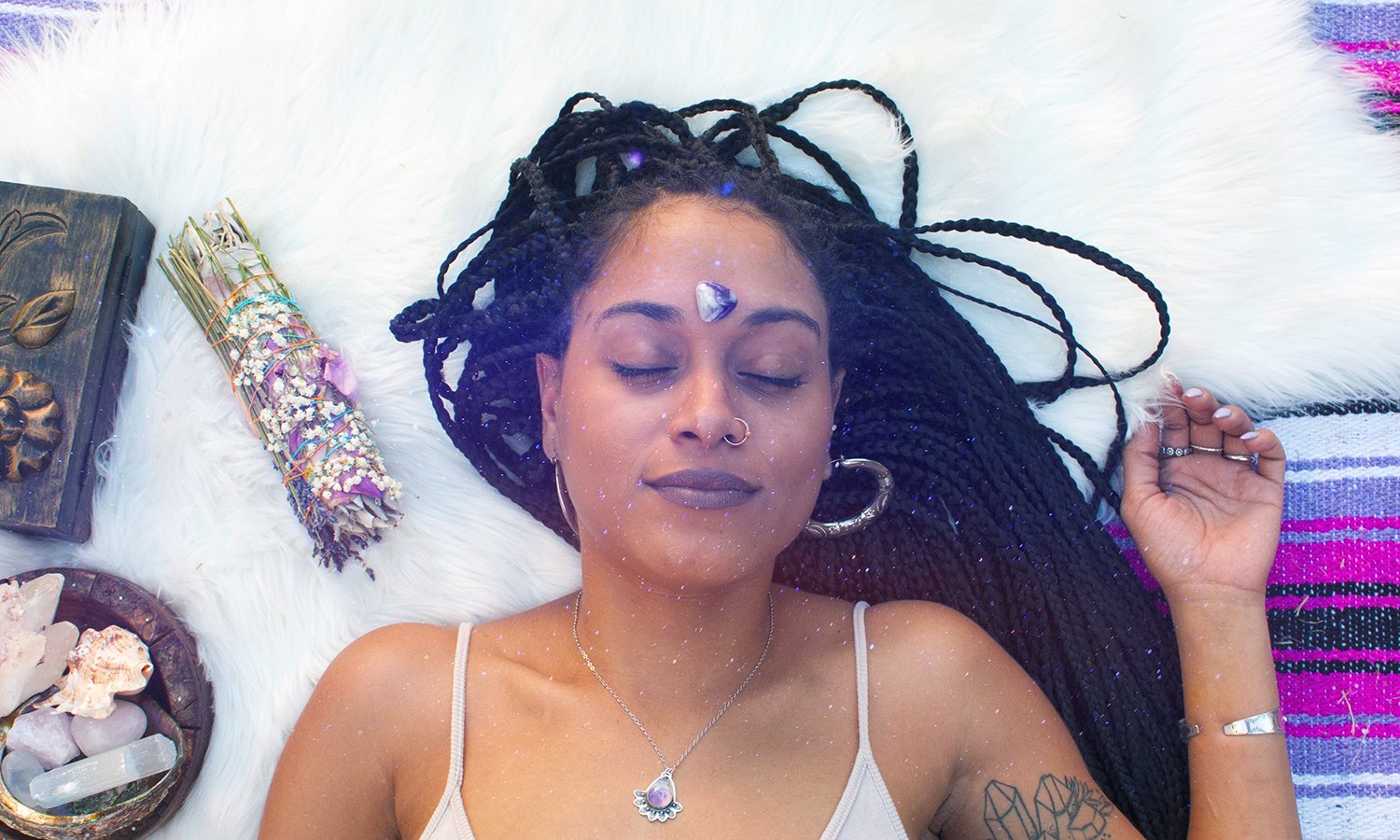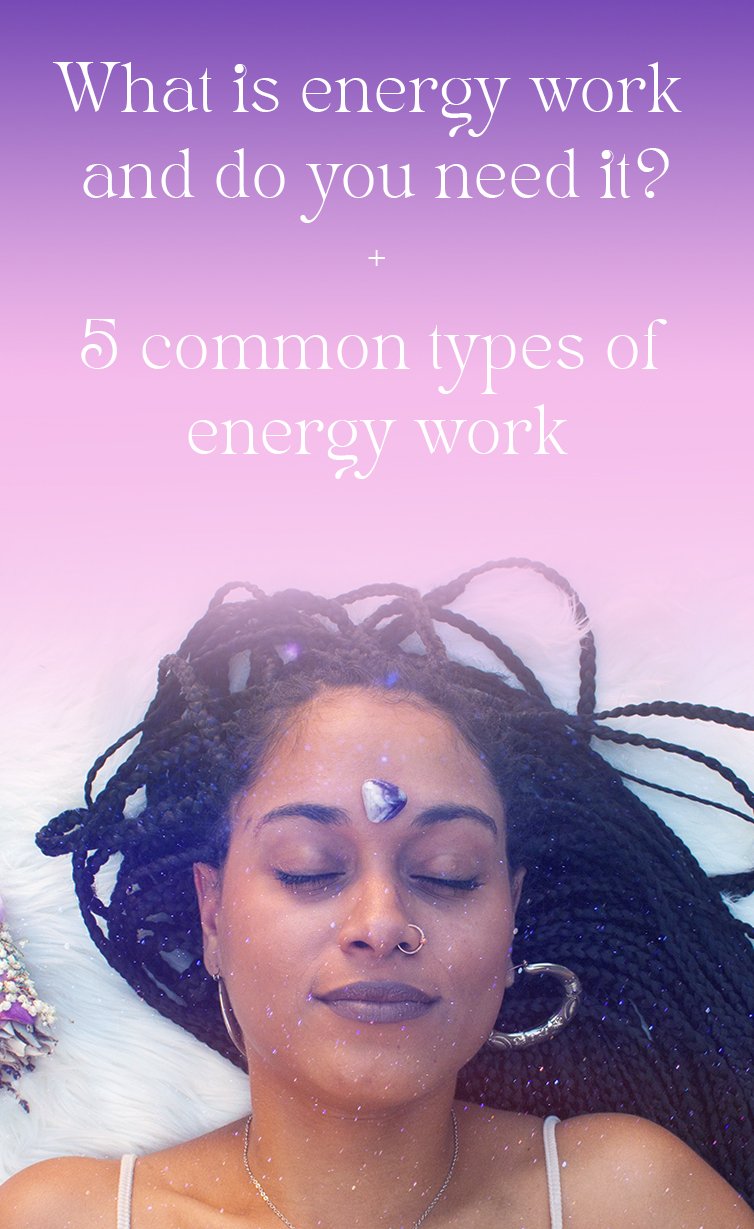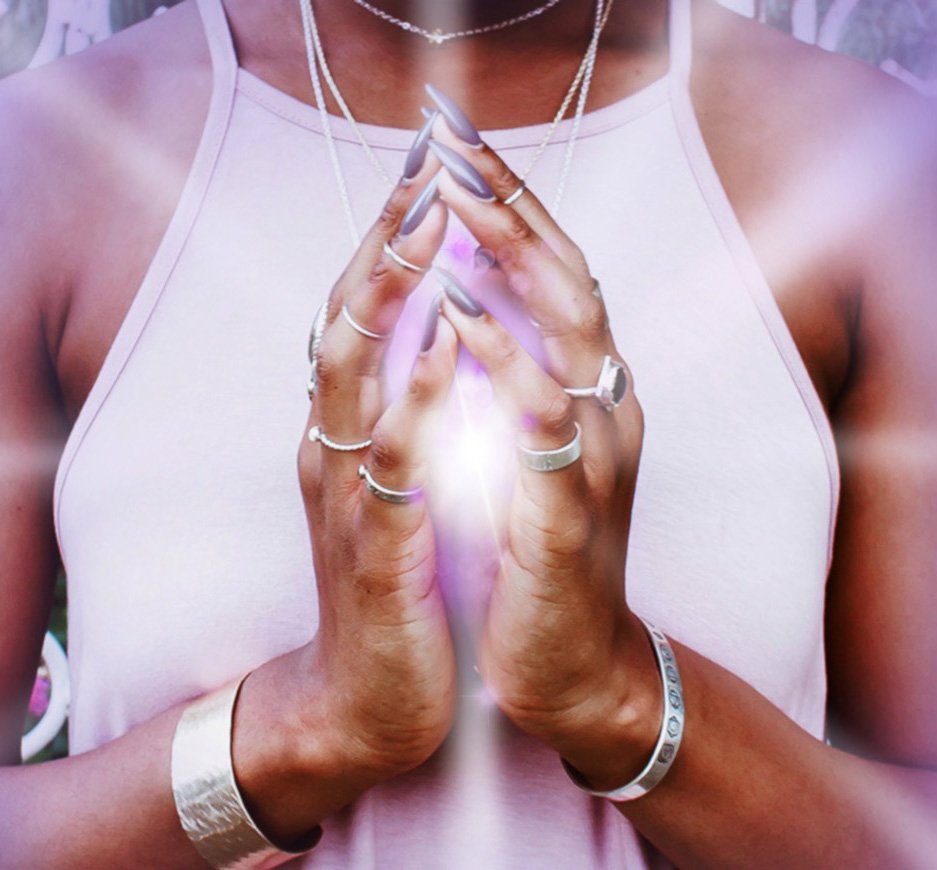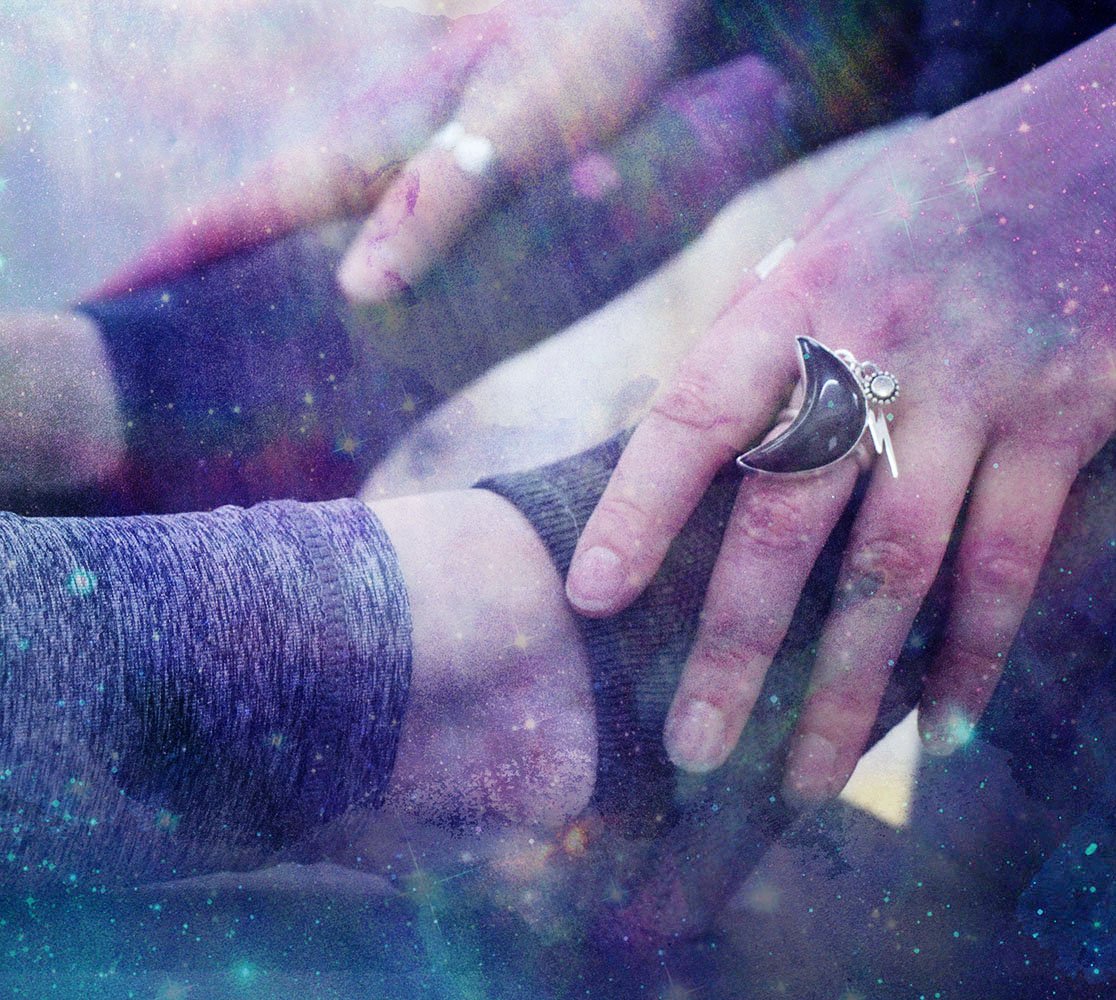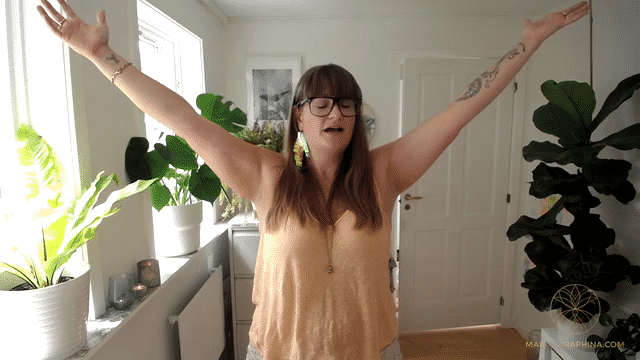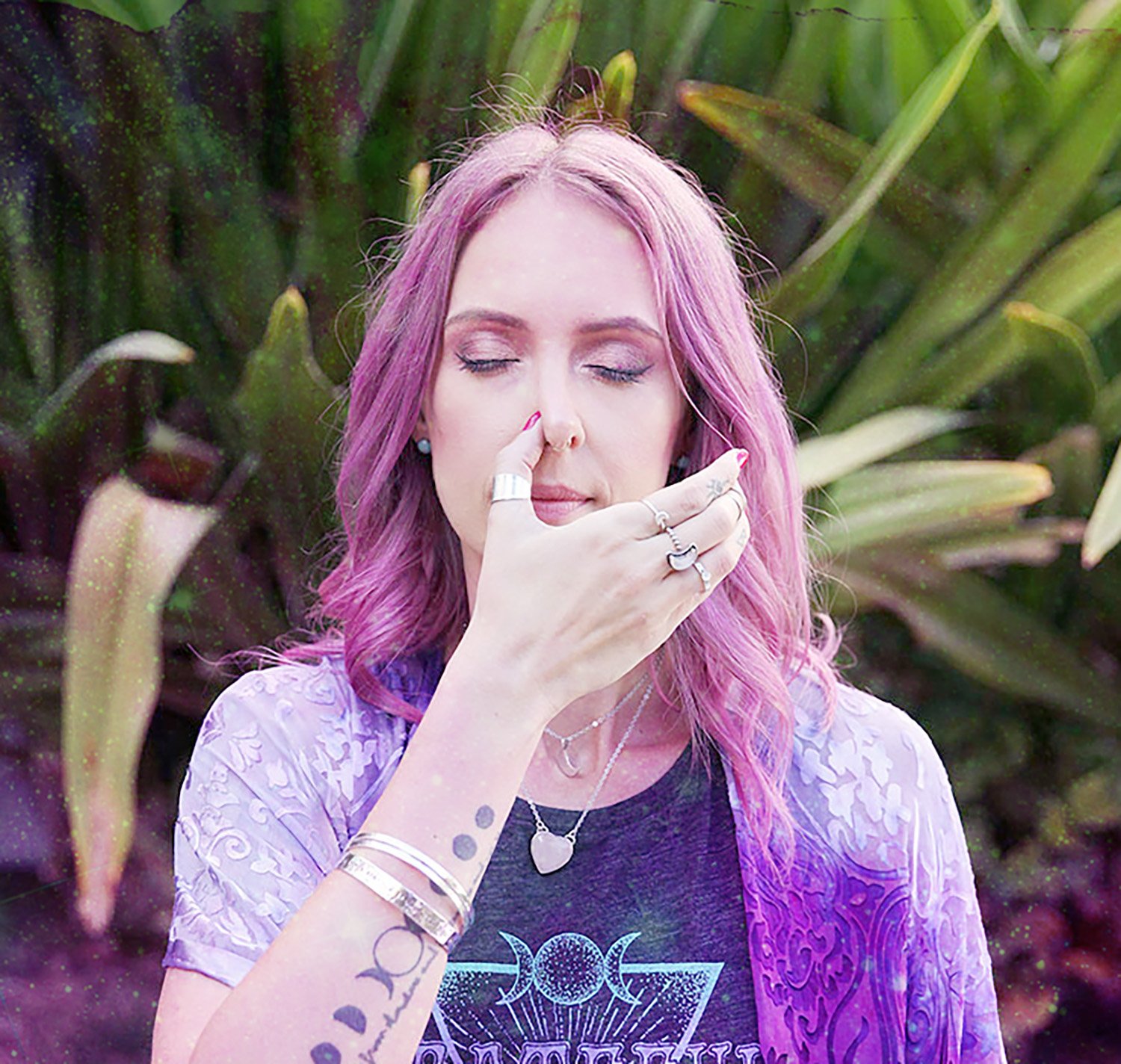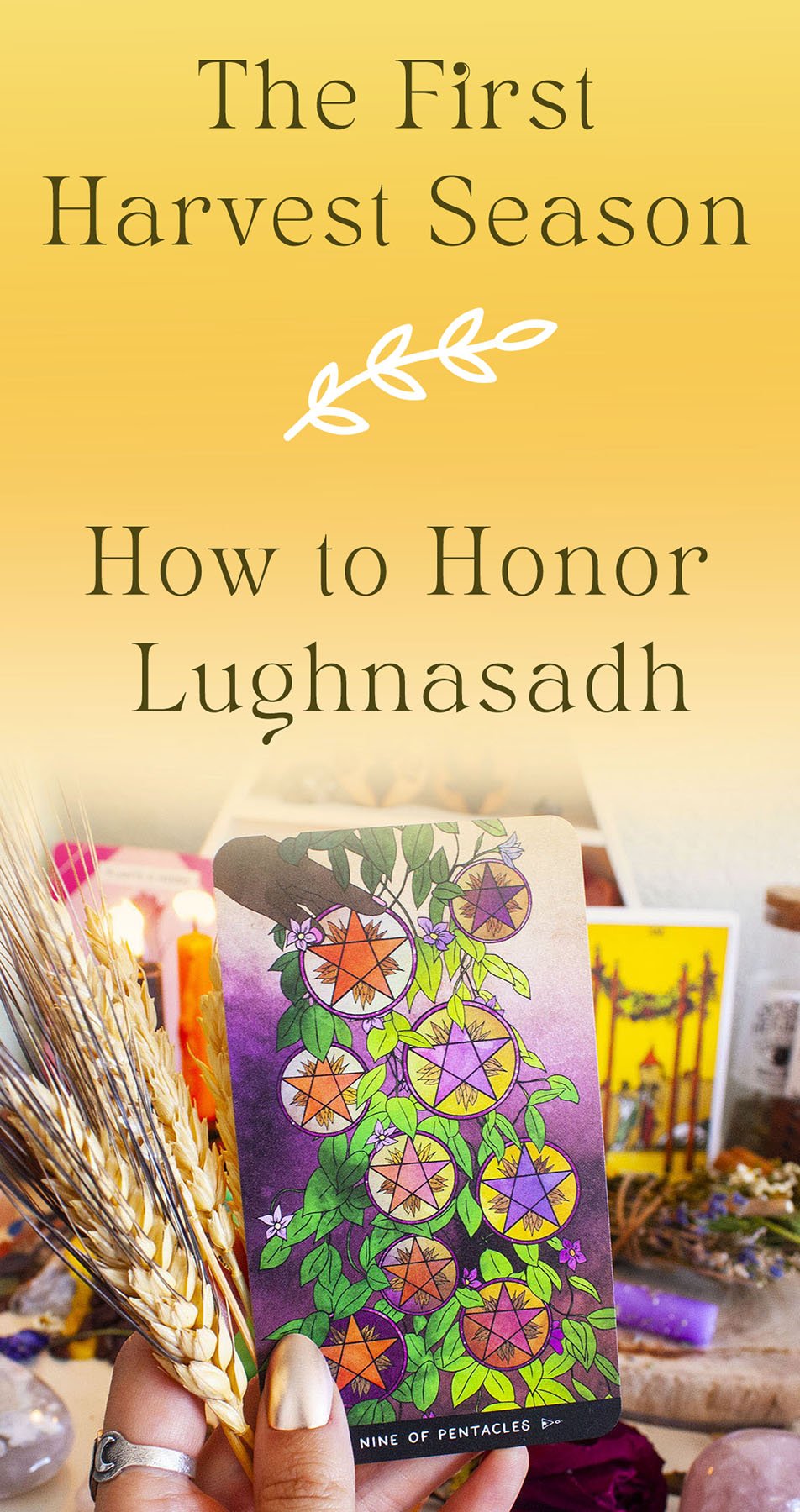A Card Spread for the Winter Solstice
The winter solstice, or Yule, is the year's shortest day and longest night. Yule is a sabbat on the Wheel of the Year that marks midwinter, and even though it’s the darkest time of the whole year, it represents a time of death and rebirth. Here is a card spread to help identify, grieve, and release what’s ready to be shed and reborn within yourself this season.
The winter solstice, or Yule, is the shortest day and longest night of the year. Yule is a sabbat on the Wheel of the Year that marks midwinter, and even though it’s the darkest time of the whole year, it represents a sacred portal of death and rebirth. If you're new to The Wheel of the Year, you can find more about it here.
After Yule, each day begins to get a little more light and a little less dark. It’s a time to celebrate the return of the light.
Yule is associated with evergreen, holly, ivy, mistletoe, red, white, green, gold, and fire. Sounds a little bit like Christmas, right? The pagan holiday of Yule predates Christmas, and when Christianity swept through Europe, Yule's traditions were woven into the Christian holiday of Christmas.
Like many of us witches, pagans, and/or spiritual folks, you may honor both Yule and Christmas.
Keep scrolling to find a tarot or oracle card spread for this Winter Solstice and Yule and other ways you might like to honor this sabbat.
A CARD SPREAD FOR YULE
Take some time to create a ritual space before you pull your cards. Gather a few candles, light some incense or other herbs, and ground yourself before dropping in with your cards. Set an intention for your intuition, your highest self, and/or your spirit guides to communicate with you through the cards.
When you feel ready, shuffle your cards and pull one card for each of the following questions:
What themes are surfacing most prevalently, within and outside of me?
How can I tend to and grieve what wants to surface?
What's ready to pour into the cauldron of the earth this Solstice?
How can I care for myself during this tender time of shedding?
What wants to be reborn, within and outside of me?
Image copyright Cassie Uhl 2023.
Consider sitting with your cards, journaling, and meditating for a while to help you process their medicine and really move the messages through your body.
Some other sweet ways to honor the Winter Solstice and Yule:
Light candles
Gather around a fire with loved ones
Connect with local evergreen trees
Burn pine incense
Meditate on a candle flame or fire
Honor the wisdom of darkness by spending time inside or outside with the darkness of the season.
Create a Yule altar with holly sprigs, pinecones, evergreen branches, and red, green, or white candles and crystals
Find more ideas here
How will you be honoring Yule this year? Let me know on Instagram.
Card Spread and Transformation Ritual for Scorpio Season
Scorpio, our fixed water sign, invites us into transformation, shadow work, and exploration of your relationship to power and cycles of death and rebirth.In this blog post, I’ll be sharing a card spread and a ritual for Scorpio season. Check out our Understanding the Energy of Scorpio Season blog post to learn more about Scorpio energy and your personal birth chart’s connection to Scorpio.
Scorpio, our fixed water sign, invites us into transformation, shadow work, and exploration of your relationship to power and cycles of death and rebirth.
In this blog post, I’ll be sharing a card spread and a ritual for Scorpio season. Check out our Understanding the Energy of Scorpio Season blog post to learn more about Scorpio energy and your personal birth chart’s connection to Scorpio.
Card Spread for Scorpio Season
We’ll use this card spread to explore the invitations and lessons Scorpio has to teach you this season. Feel free to use a tarot deck or an oracle deck for this spread - whichever resonates with you. I invite you to create a ritual space for you and your deck to communicate by taking a moment to ground and center yourself however feels good to you. In the spirit of Scorpio season and water energy, you might like to ground and center by taking a few sips of water and sinking into the sensation of the water moving through your body.When you feel grounded and ready, shuffle your deck and draw a card for each of the following questions:
What is Scorpio season here to teach me?
What is dying and being reborn this season?
What shadow material is coming up for me to work with this season?
Possibilities Scorpio season is opening up for me
After you pull your cards, sit with them. Try to take some time to journal or meditate with them to really connect with the full meaning they have to offer you. At the end of Scorpio season, you might like to revisit your cards and reflect on how they unfolded throughout the season. How did they show up? What did you learn about yourself and about the cards through the way they manifested this season?
Scorpio Season Ritual for Transformation
This is a ritual to honor how you are transforming, to honor the parts of you that are dying and being reborn.All you’ll need are herbs to sprinkle in your bathtub and candles to light while you soak. Both optional!
Open your ritual with some kind of grounding and centering that feels good to you. If calling in the directions or casting a circle is in your practice, feel free to do that here.
Spend some time meditating, journaling, or pulling cards to reflect on this question: what part of me is dying and being reborn? You might take time to connect with this part of you, ask it questions, notice the bodily sensations that come up around this and soften into the edges of this part of you. And if you don’t have a clear definition for the part of you that is being transformed or how you are being transformed, that’s okay! Magic doesn’t have to be crystal clear. You can trust the sensations and feelings, too.
When you feel ready, draw a bath. Feel free to light candles around the tub or sprinkle herbs in the water. Set the intention that as you step into the tub, you are supporting your transformation process. While you soak, reflect on what you are leaving behind and notice feelings that arise around this process. When you rise from the tub, you are supporting your rebirth.
Happy Scorpio season! I hope you find some support for this season in this card spread and ritual.
Connecting With the Archetype of Death for Samhain
Samhain ushers in the third and final harvest and shifts us into the darker half of the year. Samhain is situated in between the Autumn Equinox and the Winter Solstice. This season is our annual invitation to explore and honor not only the need for death and decay but acceptance of death and decay.
Samhain ushers in the third and final harvest and shifts us into the darker half of the year. Samhain is situated in between the Autumn Equinox and the Winter Solstice. This season is our annual invitation to explore and honor not only the need for death and decay but acceptance of death and decay.
As we embark on the season of the dead, the crone, and returning to the cauldron to be transformed, we're faced with the fact that no person, animal, or plant can depart from the inevitability of the death and rebirth cycle. We see the flow of this cycle in the seasons and nature, yet so often, our human minds recoil when we think about the death phase of the cycle of life.
In this post, we'll be exploring the archetype of death in relation to the witch's new year, also known as Samhain. I'll offer some insights around why Samhain is considered the witch's new year, the importance of honoring the dead and death this season, and some ways to tune into this season through ritual and common correspondences.
Content warning, I will be discussing death and themes of death within this post, so if you are actively grieving or recently lost someone, this is a gentle notice to proceed with caution.
Listen to this article on my podcast, Rooting into Wholeness, here.
Why is Samhain the Witch's New Year?
Early in my practice working with the Wheel of the year and the seasons, It confused me that Samhain was considered the new year. Here in the states and many other places around the world, there's a hyper-focus on the new year being a time of celebration and newness. Why then does Samhain, our descent into darkness, mark the new year for those honoring nature-based spiritual practices?
Samhain is the ever-important gestational period before the return of the light. It is the part that's so often overlooked in the patriarchal and linear-driven society we currently live in, just like as the fetus transforms in the womb, the natural world retreats into decay and death during this time. We are also given the same opportunity to withdraw, allow parts to fall away, and alchemize from within.
Nature-based spiritual practices are rooted in neverending cycles, not starting points and finish lines. The witch, and anyone living alongside the seasons, not only understands but welcomes the need for decay and death. At the time of Samhain, the season calls us inward to begin this process of rest, death, and alchemy.
One of the greatest gifts of this season is the opportunity to face and learn from our relationship with death and decay, which is what we'll explore here.
Connecting with the Archetype of Death for Samhain
How do you feel in your body when you hear the words death and decay? Do you embrace these words, do they roll off of you with ease, or does something within you want to disassociate with these words?
It's easy to see how disconnected we are from death, especially in the West. We see celebrities that refuse to age, food with signs of decay thrown out, and many of our wise elders placed in homes outside of the family unit. Samhain is an opportunity to feel into all of this and become more comfortable accepting death and decay. It's an opportunity to heal our wounds around death to be more accepting of it when faced with it, whether in your own life or the life of a loved one.
If you're willing to meet this season where it is, in decay and death, it has so much to teach you, so much to teach all of us. Learning how to be in this world with more acceptance around death and even aging are some of the most freeing and empowering feelings we can cultivate. Here are common ways our ancestors connected to death and a few ways I like to connect with the archetype of death during this season.
1. Honoring loved ones and ancestors in spirit.
One of the most common themes of this season is honoring loved ones who've crossed into the spirit realm. Samhain is a time in which the veil between the physical and spirit realm is thin. If you've lost loved ones, it's an ideal time to honor and connect with them. It's also a time to connect with your ancestors. We do this at Samhain to acknowledge the lives our loved ones lived, and continue to live in spirit. Honoring deceased loved ones and ancestors can also help you tune into the archetype of death within yourself.
As someone who's lost a lot of family members, I've found that fear of death can make it challenging to connect with loved ones who've crossed over. Facing the fact that loved ones are no longer here, in physical form, brings forth an undeniable recognition of death, which can be hard.
It's important to note that everyone's grief process is unique and that denial is a natural part of grieving. I went through a long phase where I could not even look at pictures of my father and grandmother early in my grief process. If you have experienced deaths in your life, what I'm encouraging here is a curiosity around your relationship with honoring loved ones who've crossed over. How does it feel when you take time to sit and think about the people in your life who've died? Perhaps you're not ready to do that, and that's okay, but maybe it's something you are ready to do, but the fear of facing death has prevented you from such activities. If you've experienced deaths in your life, I invite you to be open and curious about where you are with this.
Some common ways to honor loved ones who've transitioned into spirit are to create an altar for them with pictures, offerings of foods and treats, and items they loved. Doing this creates a sacred portal of honor, remembrance, and connection with your loved ones in spirit. A silent or dumb supper is another way to connect with loved ones in spirit. On the night of Samhain, consider creating a meal in honor of deceased loved ones, then create place settings for them to honor them and invite them in for this season. Lastly, and especially if you dabble in psychic work, Samhain is a great time to connect with your loved ones in spirit. You could do this through any number of ways that could include tuning in psychically, tarot or oracle cards, scrying, pendulums, or any other divination tool you prefer.
Of course, this work can go far beyond that of deceased friends or immediate familial connections and can extend to your ancestors as well. If information about your cultural heritage and ancestral past is available to you, consider placing some items on your altar in honor of them as well. There's also a great past blog post from Eryn Johnson on my blog with suggestions for a guided meditation to help you connect with your ancestors for Samhain here.
2. Connecting with symbols and imagery of Death
Samhain is an opportunity to cultivate more acceptance and reverence for death. Here are some different ways to connect with the archetype of death in this way. This can be deep work. Trust that whatever suggestions you do feel called to are perfect for you at this moment.
Explore the death card in the tarot. Dig deep into the symbology and imagery of this card. Any deck you feel called to or have handy will do. Read different interpretations of the death card. Consider journaling on the card, notice what comes up naturally, how it makes you feel, etc.?
Connect with items or symbols associated with death and decay. Some options are crystal skulls, animal bones, snake sheds, or animals often associated with death like owls, crows, moths, etc. There are so many ways to connect with these items and their inherent connection to death and decay. You could simply place any of them on your altar and notice how you feel as you engage with them regularly. You could also consider meditating with them, or if journeying is a part of your practice, you could journey to them in spirit to learn from them.
Lastly, I invite you to be more open and curious about death and decay. When you interact with an elder or see an elderly person in public, what comes up for you, and how do they make you feel? When you come across fruits or vegetables in the grocery store with signs of decay, how does it make you feel, and do you pass over it for an item that appears more pristine? What comes up for you when you think about your death and the deaths of your loved ones?
Though these can be difficult questions to grapple with, they each hold seeds of wisdom and ultimately growth. If you feel the call to explore death more deeply, this is an ideal season to do so.
3. Explore and Reclaim your relationship with the dark
Even our modern interpretations of Samhain with Halloween have held onto cozying up to the dark. However, it wasn't until our early departure from Goddess-based and cyclical practices that we started to attach negative associations to darkness and death. The dark and death have not always been feared and associated with evil. It was the influx of linear patriarchal thinking, God-based religions, and white supremacy that have each deeply affected our relationship with the dark and death in harmful ways. Demetra George talks about this in her book Mysteries of the Dark Moon, which I highly recommend.
The Wheel of the Year itself is broken into a dark and light half. The dark half of the year and Winter begins with Samhain, and the light half and Summer begins with Beltaine. Even though the Wheel itself is a relatively modern interpretation of how our ancestors celebrated, we can see in the Coligny calendar of the Celts that there was deep and equal reverence for both the light and the dark.
I encourage you to notice what feelings arise when you think about the dark, whether it be the literal absence of light or black objects. You might even find it helpful to spend more time in the dark, outside or inside, simply to notice how it makes you feel and what it brings up within you. Once you start digging, it's hard to unsee all of the ways we've been trained to associate the dark with negativity. I don't offer these invitations to say that the light is bad, but it's our often dysfunctional relationship with the dark that cuts us off from the wisdom of death.
Shadow work can be a great place to start when exploring your relationship with the dark, and this season is a great time to dig into some shadow work! I've got a few past blog posts all about shadow work that you can check out here.
Common correspondences for Samhain
Here are some of my favorite common correspondences for Samhain. Most of these come from my new book, Understanding the Wheel of the Year
Themes: Ancestral connections, releasing, cleansing, death, divination, protection, the underworld
Moon Phase: Waning Crescent Crystals: Amethyst, labradorite, obsidian, onyx, hematite
Colors: Purple, black, silver, orange
Tools: Besom (broom), cauldron, skulls shapes, bones, any items that remind you of death, salt, divination tools (pendulums, tarot cards, scrying mirrors, etc.)
Plants and Scents: Mugwort, cinnamon, clove, patchouli, mullein, garlic
Foods: Apples, pomegranate, pumpkins, squash, nuts, seeds, meat
Runes: Algiz (protection, especially in the psychic realm), Ansuz (receiving wisdom), Perthro (hidden secrets and mystery), Othalo (ancestry), Isa (halt or freeze action)
Zodiac: Scorpio
Goddesses: Cailleach, Cerridwen, Hecate, Lilith, Persephone
Tarot card: Death, Wheel of Fortune
If you're looking for some less grim rituals than what I've offered here, haha, I have you covered too! This is indeed a season to celebrate, even if it centers around death. One of my favorite activities at Samhain is to do a thorough house cleansing and to add some extra protective layers to my space. I have an in-depth past blog post all about this that you can check out here. It's also a great time to perform psychic work of all kinds, which I touched on with connecting with your ancestors, but any kind of psychic work for any purpose can be incredibly potent during this season. Find more rituals for Samhain here.
Wishing you a magical and blessed Samhain! xoxo Cassie
New Moon in Libra Ritual: Sacred Connection
The new moon in Libra offers you an invitation to be open to bringing more beauty and connection into your world. New moons are always a time for being open to new ideas and ways of being in the world, our cosmic clean slate if you will. As a cardinal air sign, Libra energy is one of balance and initiation. The planetary rulership of this sign is Venus, bringing in the energy of love and beauty.
The new moon in Libra offers you an invitation to be open to bringing more beauty and connection into your world.
New moons are always a time for being open to new ideas and ways of being in the world, our cosmic clean slate if you will. As a cardinal air sign, Libra energy is one of balance and initiation. The planetary rulership of this sign is Venus, bringing in the energy of love and beauty. Learn more about Libra energy here.
The energy of Libra within a new moon calls you to explore themes of beauty, reciprocity, and connection. Here are some questions to focus on for this new moon. What areas of your life are calling out for more beauty? How can you allow in more beauty? In what ways can you be in more sacred and aligned reciprocity with yourself, those around you, and the world at large?
Themes for the New Moon Libra
Themes: Justice, balance, beauty, love, connection, and reciprocity
Planet: Venus
New Moon in Libra Ritual for Sacred Connection
The best time to perform this ritual with the new moon in Libra is the day of or the two days after the new moon.
You’ll need:
15-30 minutes of quiet and uninterrupted time
Piece of rose quartz
Optional: rose scent (incense, dried rose, etc.), guided meditation to connect with your guides (free for newsletter subscribers, click here to receive).
1. Ensure that you have 15-30 minutes of uninterrupted quiet time. Create a sacred space in a way that feels good to you, for example, burning incense or herbs mentioned above, calling in the four directions, or casting a circle. Root into the space by connecting with your breath and body. Notice your body and how it feels. Begin to breathe more intentionally, sending your breath deep into your low belly.
2. Bring an area of your life to your mind that you feel needs more love and beauty. Holding your rose quartz in your hands, close your eyes, and visualize that area of your life being filled with love and beauty. Continue to hold your rose quartz as you meditate.
3. Close your eyes and prepare to journey to meet one of your guides to help you bring more love and beauty into this area of your life. State aloud or in your mind, “I’m ready to receive guidance around __________ and be in sacred reciprocity with a guide, please, make yourself known to me.” Click here to be taken to a free guided meditation to connect with your guides.
4. As you meditate, focus on your breath and your body. If you can visualize a beautiful location in your mind, do this now, as this can create a space to commune with a guide.
5. Be open to guidance, suggestions, and wisdom from spirit. Trust what comes to you.
6. If a spirit guide presents itself to you and offers guidance, ask what you can do to reciprocate the information shared with you.
7. Close your meditation by thanking any guides who came through. Consider writing down anything that came through to help process and remember.
8. If your guide made a request for reciprocity, be sure to act on it. If they did not, consider creating an offering on your altar to show your gratitude for the connection and wisdom shared.
9. Leave your rose quartz out the night of the new moon to carry with you afterward as a reminder of how to bring more love and beauty into your life.
If you enjoyed this ritual, please consider sharing it with someone else who may enjoy it too. New moon blessings!
The Second Harvest // Honoring the Autumn Equinox with Apples
We started our triplicity of harvests with Lughnasadh, and the harvest season continues with the Autumn Equinox. The Autumn Equinox is our sacred portal into the darker half of the year. The amount of sunlight and night we experience will be in equilibrium for a moment before darkness begins to rule each day and call us more deeply inward.In this share, we'll discuss the layered energies of the Autumn Equinox, a few ways to tune into and honor its energy, and some sacred correspondences, specifically apples.
We started our triplicity of harvests with Lughnasadh, and the harvest season continues with the Autumn Equinox. The Autumn Equinox is our sacred portal into the darker half of the year. The amount of sunlight and night we experience will be in equilibrium for a moment before darkness begins to rule each day and call us more deeply inward.
In this share, we'll discuss the layered energies of the Autumn Equinox, a few ways to tune into and honor its energy, and some sacred correspondences, specifically apples. I'd also like to discuss the name Mabon often associated with this season. Listen to this post on my podcast, Rooting into Wholeness, below.
Mabon is a common name associated with this season, and though there's nothing wrong with referring to this season as Mabon, which is one of the more manufactured names on the Wheel of the Year. Names that don't quite make sense on the Wheel of the Year aren't something new and are something I discuss in my new book, Understanding The Wheel of The Year, shop it here.
The Wheel of the Year itself, as a unified construct of seasonal celebrations, is a relatively modern compilation of celebrations from various people, not one specific culture. The name Mabon was assigned by Aiden Kelly, one of the collaborators of the modern construct of the Wheel of the Year. Mabon was a Welsh mythological figure who doesn't appear to have any real connection to the Autumn Equinox. Some believe Aiden simply wanted another short name to associate with this season and, Mabon was the best he could come up with. We may never know! That said, Mabon is a common name associated with this season by many Wiccans. If it resonates with you, use it. If it doesn't, referring to this season as the Autumn Equinox is fine too. As with all of our seasonal celebrations, this is a time to honor and connect with the earth, not quibble over names.
A Balance of Light and Dark
There are so many beautiful energies layered into this season. This phase brings us more deeply into the waning side of the year by corresponding with the last quarter moon (a moon of equal light and dark, another visual of the balance this season brings about.) We also shift from Virgo to Libra season at this time. The sign of Libra, of course, being the scales mirroring this theme of balance again.
Beyond the energetics, the equinoxes spur extreme physical changes as well. The sunlight no longer reigns supreme throughout our day. The plant and animal world take note, and things start to shift and change all around and within us. These physical changes can bring a heightened sense of balance and change for everyone.
The full moon closest to the Equinox, which we experienced earlier this week, is the harvest moon. It wasn't uncommon for our ancestors to work all through the night in the fields harvesting crops in preparation for the winter ahead during the harvest moon. It's also fitting that our full harvest moon happened in the sign of Pisces (the end of the zodiac year) as we fully step into the darker half of the year.
As with any harvest, themes of abundance and gratitude surface. What always comes up for me around these themes is the idea of equal reciprocity. Equal reciprocity is always important, but with this season being one of balance, it can be a healing theme to explore. So, as you assess the abundance in your life, can you make space also to explore equal reciprocity? If you have an abundance of food, can you find a way to give back to the earth or those who need more food? If you have an abundance of time, how could you use it to serve yourself and others best? Alternatively, if you find yourself lacking in a specific area, could you ask for more of what you need? These questions can be applied to all facets of your life. I'll touch on this more when we talk correspondences because I have a perfect tarot card for this season.
A final theme that runs through this season is wholeness. Anytime we strive towards balance, we're moving into more wholeness. It's a time to take stock, shed what's no longer serving, and call in what you'd like to see more of in your life. We see this theme reflected perfectly in the apple, which brings me to our first ritual for this season.
Apple Rituals for the Autumn Equinox
I will be focusing solely on apples for this ritual section! Why apples? Apples tend to ripen around this season and are a potent symbol of abundance, gratitude, and wholeness. Apples are associated with the underworld connecting them with moving into the darker part of the year. There's no shortage of myths and folklore from the Celts, Druids, and other Euro-pagans about apples, apple trees, and their spiritual significance. The island of Avalon translates to the "Island of Apples." Apples are viewed as sacred and magical fruits by many.
When cut horizontally, the apple reveals five seeds in the shape of a star. The five seeds represent the five elements and the four directions. The circle encompassing them (the outer skin of the apple) represents the wholeness these energies create when combined in equal balance. The apple is a sacred symbol of wholeness and the path to wholeness.
Those are just a few reasons why apples are perfect for this season! There are many ways to work apples into your ritual practice this season, which is why I'm solely focusing on apples for these rituals. However, if you're looking for some other ways to tune into this season, click here or here for some past posts all about the Autumn Equinox.
This ritual is adapted from my book, Understanding The Wheel of the Year (order it here!).
Apple Ritual for Wholeness
You'll need:
One apple
One brown candle and fireproof dish or candle base
A piece of paper and pen or pencil
Steps:
Gather your materials and ensure that you won't be disturbed for 20-30 minutes.
Take 2-3 minutes to center and ground yourself. You can do this by tuning into your body or focusing on your breathing for a couple of minutes.
Once you feel ready, bring an area of your life to mind that feels out of balance. Write this situation down on a piece of paper.
Cut your apple across the middle, and then cut a slice from that. Your slice should have a five-pointed star on it representing the five elements.
Place your paper on the bottom in a fireproof tray, bowl, or plate. Place your apple slice on the top.
Hold your brown candle in your hand and ask for guidance around finding more balance and wholeness around the situation you wrote out.
Place your candle on top of the apple. You'll be using the apple here as a vessel to inspire wholeness in this spell.
Light your candle and say aloud to yourself, "I am whole and perfectly balanced. So it is." or something similar. Stay with the candle as it burns.
Note: Always use proper fire safety and care when working with candles. Never leave your candle unattended.
As your candle burns, gaze at the flame and tune into your breath and body.
Call in each of the five elements one at a time (Earth, air, fire, water, and spirit) to restore you to wholeness and bring balance.
Stay with your candle as it burns and feels the support of the five elements around you.
Be open to any ideas that come to you to find more balance and wholeness in your life.
Write down any ideas that came to mind to find balance and wholeness in your life.
Finally, in the vein of equal reciprocity, I suggest giving an offering to the earth for any wisdom, insights, or balancing you found throughout this ritual.
Watch the ritual in this Instagram reel I created below.
Here are some other simple ways to weave apples into your ritual practice.
Eat apples or drink.
Bake with apples (one of my favorites!) As you do, be mindful and aware of their sacred connection to wholeness and consider cutting your apples horizontal to reveal their inner star for your final product! I love a good old-fashioned apple pie or tart for this season.
Adorn your altar or home with apples.
Go apple picking if it's in season for you.
Learn more about myths and folklore about apples connected with your heritage. Many cultures have legends and mythology about apples.
Meditate while holding an apple, and ask the apple to share its wisdom with you.
Plant an apple tree
Save apple seeds to use in other spellwork. They correspond with magic, psychic abilities, protection, rebirth, and death. They're an excellent option for protection rituals.
If you have apple trees where you live, work with the wood of the apple tree for ritual or spellwork.
Fall Equinox and Mabon Correspondences
Correspondences are energies that play well together or match. Working with correspondences is a great way to better amplify your rituals, spells or connect with a specific energy. Placing some correspondences for this season can help bring the energy of the Fall Equinox into your space. Here are some of my favorite correspondences for this season, all from my new book, Understanding the Wheel of The Year.
Moon Phase: Last Quarter Moon
Energy center: Sacral, heart
Element: Water
Crystals: Carnelian, snowflake obsidian, rhodonite, malachite, moonstone, yellow topaz
Colors: maroon, orange, brown, tan
Tools and special objects: fall leaves, corn dolly, guards
Plants and Scents: yarrow, sage, cinnamon, patchouli, frankincense, anise
Foods: Apples, grains, guards, pumpkins, nuts, seeds, berries
Runes: Gebo, Fehu, Mannaz, Sowilo
Goddesses: Cailleach, Persephone, Inanna, the Morrigan, Modron
Gods: Avalloc, Dionysus, Mabon
I also wanted to touch on some tarot cards for this season. When we discuss equal reciprocity, the card that comes up for me and makes me think of the Equinox and Libra season is the 6 of cups. 6's correspond with Venus, harmony, and balance. And the cups mirror the water element that corresponds with this season. The card itself speaks to a give and take between one's self or between you and others. It's a great card to meditate with or journal about for this season.
As you can see, this is a rich and powerful season. Remember, each sabbat is a season, not a day. You can tune into its energy and honor it anytime until Samhain.
If you enjoyed this share, please consider sharing it with someone who may enjoy it too—wishing you a beautiful second harvest season.
Love & Shadow xoxo, Cassie
What is energy work and do you need it? + 5 common types of energy work
What is energy work? Is it real? Should you try it? I can’t tell you what’s best for you, but I can share detailed information about various energy work modalities and my personal experience with them to help you determine if and what’s right for you.In this post, you'll learn a bit about what energy work is, if it's right for you, who can practice energy work, five common types of energy work, and experts in each field linked.
What is energy work? Is it real? Should you try it? I can’t tell you what’s best for you, but I can share detailed information about various energy work modalities and my personal experience with them to help you determine if and what’s right for you.
In this post, you'll learn a bit about what energy work is, if it's right for you, who can practice energy work, five common types of energy work, and experts in each field linked.
This is a big topic, friend! I invite you to cozy up with a cup of tea or to bookmark this read to refer back to later. Or, you can listen to the full episode here on my podcast, Rooting into Wholeness.
My Experience With Energy Work
I experienced energy work for the first time at a very young age, 10 or 11 years old. I got my hands on some books from my grandmother about spirituality that explained how to feel the energy between my hands and over my body. I was easily able to feel my energy and was hooked. I continued meditating and working with my energy from that day in a variety of ways.
As an adult, I’ve tried various energy work methods both on myself and from others. I’ve also been practicing shamanic energy healing (in a Celtic lineage) for the last two years. Any of the methods I share here are methods I’ve experienced or administered firsthand.
I will save my full story for another post that I’ll share soon.
What is Energy Work?
Energy work is the intentional effort to manipulate your or someone else's energy for spiritual, emotional, or physical healing. There are countless modalities of energy work practices in cultures around the world. You can perform energy work on yourself or seek it out from a professional.
Energy work affects both the subtle body system (the energetic body) and the physical body in various ways. The subtle body system shows up differently across cultures. Here are some of the subtle body systems we see across the world: chakras and nadis (Hinduism), meridians (Chinese Medicine), the three cauldrons (Celtic), aura (cross-cultural), Ojos de luz (Incan energy system), and the list goes on. Most cultures around the world have some reference of an energy or subtle body system.
Anything that affects the subtle body can also affect the physical body because they’re intertwined. It’s now commonly accepted that emotions can be stored in and affect the physical body. Many believe that energy can be manipulated to create changes in the subtle and the physical body in this same vein. As above so below, as within so without.
Science now recognizes that everything is energy. When we zoom in on the physical world, really far, all we have is vibrating energy. There’s nothing solid about anything in the world we live in. It’s all energy. It can be hard to wrap the mind around physical objects not really being solid, but it’s what we know now to be true. This quote from the physicist Erwin Schrödinger illustrates this well in the quote below.
“What we observe as material bodies and forces are nothing but shapes and variations in the structure of space. Particles are just schaumkommen (appearances).”- Erwin Schrödinger
Aside from the quantum world, there’s also something to be said for unseen energies that we already know exist, like light waves, sound waves, electromagnetic energy, and heck, even wind. There’s an entire world of invisible energy that can affect us both positively and negatively. Though science has not completely caught up with the idea of humans having the potential to spark healing through touch and other psychic abilities, I believe it's something many ancient peoples have known all along.
We spend so much time tending to and caring for our physical bodies, but what about our energy, our essence.
Should You Try Energy Work?
If you feel called to try any kind of energy work, I suggest trying it. The bigger questions that you'll need to ask yourself are what kind of energy work you want to receive and who you want to work with. These are not questions that I can answer for you and will require some research and reflection.
As someone who's received a lot of different kinds of energy work, the best advice I can give you is that you'll know when you know. If you feel pulled to work with someone, honor that, and then do a bit of research about them, which I cover in the next section, to ensure that they're in alignment with your values and are working ethically. If you get any internal nudges that someone is or isn't a good fit, honor that.
Who Can Practice Energy Work and Can I Practice on Myself?
There are a lot of grey areas and different opinions within the answers to these questions. I will do my best in this short space, but please know that many feel differently and that this is a short answer to big questions.
If there’s one thing I hope you take away from this post, it’s that you can perform energy work on yourself. It is not something you need to pay hundreds of dollars to receive. There are many great energy work tools that you can use on yourself, some of which I will share here. Personally, I think it can be extremely powerful and healing to learn different ways to manipulate and heal your own energy. I discuss some of this in my “Understanding Auras” and “Understanding Chakras” books, which are great places to start.
Regarding who can practice on other people, here are some suggestions and questions I always ask myself.
What is their training? Notice I said training, not Certification. Certification is not always a necessity in the case of energy work. Sadly certifications can actually be quite misleading and are not equally accessible. In fact, certification processes often leave out the very people who have trained in indigenous cultures and lineages.
Many certification processes end up being watered-down versions of traditional energy work methods. Furthermore, they could be actively causing harm to the indigenous peoples they came from.
Certification is not always bad, but it’s important to ask some follow-up questions and use discernment when hiring someone with certifications in the energy work methods listed below, like, “Where did the certification come from?”, “Who did they train with for the certification?” and “Were the indigenous and cultural roots respected in the certification process?”. If these things aren’t stated on a person’s website who’s offering energy work, you have every right to ask, and I’d encourage you to do so.
Benefits and Risks of Energy Work
The possible benefits of energy work are vast and will vary from method to method. I'll dive into specific benefits for each kind of energy work method I discuss in their respective sections. Here's a general list of benefits I've personally experienced from different kinds of energy work.
can induce deep calmness and anxiety reduction
can help you feel closer to the spirit realm and connected to All Life
can aid in the balancing of the chakras and subtle body
can spark physical healing (energy work should never replace the guidance of a medical professional)
can bring messages from loved ones and spirits
can help with the removal of unwanted or stagnant energy
can be supportive in processing shadow work and trauma (energy work should never replace the guidance of a trained therapist)
can offer a deep sense of feeling held
can give greater perspective on life issues
can help with decision making
can bring about a general sense of peace and ease
Are there any risks to energy work. Yes and no. Some forms of energy work are riskier than others. The practitioner is actively engaging with your energy for energy work like Reiki, Shamanic healing, and intuitive healing. This is a very intimate and vulnerable act. If you are highly sensitive to energy, it will be of utmost importance for you to be clear about what you do and do not want to experience and make sure you're a good fit with the person you intend to work with.
This is why it's so important to do your due diligence about who you decide to receive energy work from. If you find someone you'd like to receive energy work from, I suggest going within and asking something like, "Is ____________'s medicine in alignment with my highest good?" Notice what comes up. Beyond this, always be sure to run anyone through the questions offered above about who can practice energy work.Another risk is having too high of expectations. Remember, you have autonomy over yourself and your energy. If you go into a session thinking that the practitioner will be able to fix all of your problems in one hour, you might leave pretty disappointed. Energy work is not meant as a cure-all (though in some rare cases, it can be) and is intended, in my opinion, to be a catalyst for healing. I view energy work as a tool to spark healing, soothe the energy body, and open the door to spirit, but oftentimes, it will require further work from you as well. Also, who among us is truly perfectly healed? Here in physical, we will always have something we're moving through.
The Fine Print
Before we dig in, I have a few important things. See, I told you this was a big topic!
Energy work should never take the place of a trained medical professional or therapist. Though energy work can affect the body, and physical healing can take place, it should never replace the work of a doctor. We are multifaceted beings who require multifaceted care. I love receiving energy work, but you better believe I’m going to the hospital if I break my arm.
I am not trained in all of the energy work methods mentioned below. As I mentioned above, I have experienced or administered and have thoroughly researched all of the methods I share here. I will link experts trained in each energy work method so you can experience it or learn more about them.
This is a non-exhaustive list of energy work techniques. I simply did not have room to share more energy work methods and techniques here, but I will list some more at the end of this article.
Ok, let’s dive in!
Reiki
I think Reiki is what most people think of when they hear energy work, but energy work is quite a diverse practice, as you'll find from this post. Here’s one explanation of what Reiki is from a past blog post by Eryn Johnson.
“Reiki is a specific kind of energy work. It’s an energy healing modality that was channeled by Dr. Mikao Usui in Japan. The word Reiki itself means “Universal Energy.” It’s Universal energy, spiritual energy, the energy of oneness, that can be channeled from one human being to another to facilitate healing.
Reiki has its own intelligence. You don’t have to be special to give Reiki, which is one of the things I love about it. We all have this energy within us–it simply gets awakened through a process called a Reiki attunement.” - Eryn Johnson
Nowadays, it’s relatively easy to become “Reiki certified” and be deemed a “Reiki Master.” This is where like I mentioned above, it’s important to do your research and have discernment when seeking a Reiki practitioner.
The most insightful information I’ve heard and read about traditional Reiki has come from Marika Clymer, trained in traditional Japanese Reiki. If you are interested in receiving or learning more about traditional Reiki, I highly suggest learning more about Marika’s work. Visit her website to learn more or book a session here. Listen to an interview with her on the Living Open podcast here, where she discusses traditional Reiki and decolonial energetic healing.
My personal experiences with Reiki have been wonderful. In my experience, it’s a very gentle form of energy work that always leaves me feeling like I’m floating in the clouds.
Crystal Healing
Working with crystals for energy healing is great because it’s so accessible. You do not have to have an innate psychic gift to perform it on yourself, there’s loads of information available about it, and a few basic crystals are really all you need. Some good old quartz is my favorite go-to!
Crystal healing is based on the belief that because crystals are perfect crystalline structures, they can stabilize or shift the energy of other things and people around them. To learn more about crystal healing, check out this blog or my book “Understanding Crystals.”
In my experience, I do think you need to be pretty sensitive to energy and patient to notice this kind of energy work as the shifts can be subtle and happen slowly over time. Although, this isn’t everyone’s experience! For this reason, you’ll often find that crystal healing is combined with other kinds of energy or bodywork. It can be a standalone form of energy work, but it also makes a great compliment to many practices.
I highly suggest my friend Ashely Leavy of the Love and Light School of Crystal Healing to learn more about crystal healing. If you’d like to receive crystal healing, Ashley has recommended two of her former students, Samady Medina of Crystal Gaia and Peyton Johnson of Sol Energy Healing.
The Energy Alignment Method (EAM), The Emotion Code, and Applied Kinesiology
I’ve lumped these three together because they’re all based on variations of muscle testing. However, they do vary and are practiced and taught in different ways.
Applied Kinesiology (not the same as Kinesiology) was developed in the early 1900s by an orthopaedic surgeon named R.W. Lovett. He used it to help determine the effects of Polio on his patients. It’s since been used and further developed by a variety of medical and energy work practitioners. Applied Kinesiology is based on the idea that when there is dis-ease or blocked energy within the body, muscles will be weakened, and subsequent muscle testing will yield a different response from the body.
I’m most familiar with The Energy Alignment Method (EAM) by Yvette Taylor and The Emotion Code by Dr. Bradley Nelson, so that’s what I’ll focus on here.
EAM uses a sway test (a form of muscle testing) to identify blocked or unhelpful energy patterns in the body. It then uses a series of unique steps to release the unwanted energy and ends by calling in the desired energy. The emotion code works similarly and uses muscle testing to find “trapped emotions” but uses a different method for releasing the trapped energy.
I would probably tell you that this energy work modality was quackery if I hadn’t tried it myself because it almost seems too easy! Over the last year, I’ve worked with a wonderfully talented coach who uses EAM named Maria Saraphina. Not only could I feel the energy leaving my body when we did the EAM (I’m super sensitive to all things energy), but I also noticed marked differences around all of the issues we worked on.
Personally, I prefer EAM to the Emotion Code and have benefited greatly from working with the EAM. I found the emotion code to be a bit harder to follow and appreciate that the EAM takes additional steps to call in desired energy.
You certainly don’t need to hire a coach or practitioner who uses this method to benefit from it. It’s actually pretty straightforward to learn and try it out on your own. I suggest starting with Yvette Taylor’s book about EAM here or The Emotion Code by Dr. Bradley Nelson here. My friend and coach Maria also offers a free instructional video about EAM that you can find here.
Breathwork and Pranayama
This is another powerful healing method that’s been under some controversy in recent years. Depending on who you ask, breathwork is pranayama (the ancient yogic practice of breath control). Still, some believe breathwork is a practice of its own, rooted in various other ancient practices. I’m not here to tell you which is true, nor have I done the necessary research to offer you an answer. Wherever you land, I do think it’s important to offer credit where credit is due.
Pranayama is an ancient yogic practice that is one of the eight limbs of yoga and translates to “breath control” or “control over the life-giving force.” Breathwork pulls from a variety of cultures and practices. Both use a series of breathing techniques to control and move the flow of energy within the body. The idea is similar for both that by controlling the breath, one can create shifts and healing in the physical, emotional, and energetic body.
I can not speak highly enough of the benefit of practicing some kind of breathing technique, whether it be pranayama or breathwork. I find it helps to calm the nervous system, get into a deeper state of meditation, helps to release stored trauma, and can activate intuition. The benefits of practicing pranayama or breathwork are vast.
Like many of the other methods I’ve mentioned here, breathing is certainly something you can do on your own. However, the results can be intense. Pranayama and breathwork are not practices, in my opinion, that will always leave you feeling like you’re floating in the clouds (though it can). It can be incredibly emotional and physically draining. If you do want to practice pranayama or breathwork but do not have any prior experience with it, I highly suggest seeking the assistance of a trained practitioner to assist you, whether it be online or in-person. There are many group and solo sessions available by countless practitioners. Here’s a list of some I recommend.
For Pranayama, Susan Barkataki offers online and in-person yoga teacher training from a lens of respecting the cultural heritage of yoga.
Eryn Johnson, who shares posts here, often offers breathwork sessions here. You can also read a previous blog post by Eryn that dives deeper into breathwork here.
Chauna Bryant also offers breathwork sessions and coaching options here.
Shamanic and Intuitive Healing
I saved this one for the end because it’s the energy work field I work in, so I knew it would be the longest section! In my experience and personal practice, I’ve found a lot of overlap between shamanic and intuitive healing, which is why I’ve put them together. Shamanic practitioners often offer a wider array of services aside from energy healing, but for the sake of this post, I’ll be focusing on it as an energetic healing modality.
I’d also like to make it clear that I’m using the term shamanism as an umbrella term here, as the term itself is rooted in Siberian practices from the Tungus people. Shamanic-like practices have been found in cultures worldwide, similar to the Tungus people and often referred to as core shamanism. This is a much bigger topic that I will speak to another day! Intuitive and shamanic healing is based on the idea that energy can be accessed, manipulated, and healed by people with psychic and intuitive gifts that have been initiated or trained in this kind of energy healing. Traditional healing in this way can be found in nearly all indigenous practices.
Healers working in these modalities can “see” (objectively or subjectively in the mind’s eye) or sense (clairsentience) misaligned energy, blocked energy, cords, and physical issues. These healers can then remove, balance, or heal the energy through in-person or distance sessions. The healer will often enter a trancelike state to perform this kind of work but not always. Similar to Reiki, proximity is not necessary as all energy is connected. This work often relies heavily on collaborations between spirit guides and helping spirits from both the practitioner and the client.
My introduction into this work began when I received my first shamanic healing session in 2013 from my now mentor Robin Afinowich. It was the most impactful healing session I’ve experienced, but I will save my story and initiation into this work for a later post.
This is a healing modality that you won’t find many certifications for because people are often born or initiated into this work and taught through lineages of teachers that don’t always honor certification the way so many do in the West.
Of course, as for recommendations, I suggest my teacher, Robin Afinowich, but she only offers local sessions in the greater Phoenix area and is generally booked out.
Another intuitive energy worker I deeply respect who I’ve heard speak about her practice often is Judea Star. She also co-hosts an amazing podcast called Spirit Speakers, which I highly recommend! You can learn more about her or book an intuitive healing session with her here.
Other kinds of energy work
This is truly such a brief introduction to energy work! There are so many other powerful kinds of energy work that I didn’t have room to discuss here. Some of my personal favorites are sound healing, acupuncture, and reflexology.
Phew, my friend! Did you make it to the end with me? If you did, I hope you enjoyed and learned something from all of this information. As always, if you enjoyed this post, please consider sharing it with someone you think will enjoy it too. If you have a question feel free to comment on social media here or reach out via email here.
How to Dress a Candle for Spellwork
Candles are included in spellwork, and there’s a reason why. Fire magic is powerful — it can help transform energy, focus your desires, send intentions into the universe, burn away what you want to release, and more.Candles are powerful on their own, but dressing a candle for spellwork can help amplify and intensify your spell.
Candles are included in spellwork, and there’s a reason why. Fire magic is powerful — it can help transform energy, focus your desires, send intentions into the universe, burn away what you want to release, and more.
Candles are powerful on their own, but dressing a candle for spellwork can help amplify and intensify your spell. In this blog post, I’ll be breaking down how to dress a candle for spellwork. To get more of an intro to candle magick, check out this blog post.
WHY DRESS A CANDLE FOR SPELLWORK?
Dressing a candle spellwork can mean rubbing a candle in oil and/or rolling a candle in herbs. Using herbs and oils that support the intention you’re working with can help you amplify your spell, making it more powerful.
Below, I share some correspondences for oils and herbs to help you decide how to dress your candles most effectively.
HOW TO DRESS A CANDLE FOR SPELLWORK
Here are some loose guidelines for dressing your candles for spellwork:
1. Cleanse your candle. You can cleanse your candle with salt, smoke, sound, or any other cleansing tool that feels good to you.
2. Rub your candle in oil. As you do, focus on the intention of your spell.
3. Roll your oiled candle in herbs if you’re using them. Again, direct your energy towards your spell’s intention as you roll your candle. Stay present, breathe, and focus on connecting your intention to your candle.
OILS, HERBS & CORRESPONDENCES FOR CANDLE MAGICK
Before I get into correspondences, a note about oils: you can feel free to use neutral oils like sunflower seed oil or coconut oil. When you work these oils, they act more as a vehicle for your herbs than an intention amplifier on their own.
Explore the Radical Candle Magic class.
If you want to use an oil that brings its own amplifying qualities, you’ll be using essential oils. If you decide to use essential oils, I invite you to be really intentional with them, buy small amounts only, and research as much as you can to find companies that are making them in the most sustainable and ethical ways possible. The same goes for herbs - do your research and make sure you’re gathering any herbs you use ethically.
Featured deck is The Ritual Deck.
For pleasure spells - Use red or orange candle colors. Use clary sage, lavender, or sandalwood oil with rose petals or other flower petals, ginger, or calendula.
For abundance spells - Use green, brown, or gold candle colors. Use basil, cinnamon, or frankincense oil with cinnamon, basil, or ginger.
For creativity spells - Use orange, yellow, blue, or purple candle colors. Use tangerine or peppermint oil with verbena, bay leaves, or angelica.
For intuition spells - Use blue, purple, or silver candle colors. Use myrrh, or clary sage oil with mugwort, chamomile, or rose petals.
For protection spells - Use brown, black, or blue candle colors. Use clove, cypress, or juniper oil with mugwort, mullen, or comfrey.
For releasing spells - Use yellow, orange, or black candle colors. Use bergamot or geranium oil with cloves or rosemary.
For love spells - Use red, orange, or pink candle colors. Use cardamom, jasmine or ylang-ylang oil with yarrow, oregano, or fennel.
Want more on spellwork? Check out these blogs:
Harvest Season Begins // How to Honor Lughnasadh and Your Gifts
Lughnasadh is the first harvest and the first celebration to honor the waning phase of the year. Just like the waning gibbous, this season is a time to reflect, harvest, gather, reap, and allow yourself to come to fruition. The flurry of growth has happened. The peak of summer has come and gone. Though it may still be hot where you are, some “crops” are ready to be harvested, both physically and metaphorically. So, what does this season mean for you, and what does it call you to explore and reflect upon?
Lughnasadh is the first harvest and the first celebration to honor the waning phase of the year. Just like the waning gibbous, this season is a time to reflect, harvest, gather, reap, and allow yourself to come to fruition. The flurry of growth has happened. The peak of summer has come and gone. Though it may still be hot where you are, some “crops” are ready to be harvested, both physically and metaphorically. So, what does this season mean for you, and what does it call you to explore and reflect upon?
This post will discuss the intersection of the first harvest season, Leo season, and Lughnasadh. We’ll explore a bit of history about the Celtic God Lugh and how he fits into all of this. Lastly, I’ll offer a few ways to honor and work with the energy of this season.
Listen to this blog post on my podcast, Rooting into Wholeness below.
What is Lughnasadh, and is it the same as Lammas?
On the wheel of the year, Lughnasadh is traditionally celebrated on August 1st or the first harvest. It is the midway point between the Summer Solstice and the Fall Equinox. As always, I encourage you to celebrate at a time that’s meaningful for you. For example, if you do gardening or farming, it’s fine to wait until you’re actually ready to harvest. Alternatively, if you want to celebrate on the 1st, that’s fine too.
I feel that the Sabbat of Lughnasadh (loo-nah-sah), also called Lammas, is one of the more undervalued seasonal celebrations. I prefer to stick with the name Lughnasadh as it is more in line with my spiritual beliefs and paths (I think its spelling puts many off, but it’s really a quite beautiful name.) The name Lammas comes from the phrase “loaf mass” and is the Christianized version of the original celebration to honor the God Lugh and the first harvest. This is truly one of my favorite times of the year.
Who's Lugh?
The name Lughnasadh comes from the well-documented Celtic warrior and sun God, Lugh. His name actually translates to “light.” Lugh was a skilled craftsman who bore many talents. He created Lughnasadh as a celebration of the first harvest and to honor his foster mother.
Lugh is deeply intertwined with the harvest season because, according to lore, he brought the knowledge of growing and harvesting crops to hunter-gatherer tribes after winning a battle with an old King. Of course, knowing how to grow and harvest crops was life-changing for our ancestors from Northern and Western Europe. This is another reason I prefer to refer to this celebration as Lughnasadh. It honors the triumphs of our ancestors. Our ancestors did not always grow their own crops, but when we did, it changed everything. Thus the first harvest is of incredible importance and something to thank our ancestors for to this day.
On an energetic level, Lugh is a reminder to continue to refine our crafts, learn new skills, and honor our talents both on an individual and collective level. This is a highly celebratory season and, pride is a big theme of Lugh and Lughnasadh.
Leo Season and Lughnasadh
This naturally brings me to Leo season! For Tropical astrology (what I use), Leo season begins on July 23rd and aligns beautifully with Lughnasadh. Leo is ruled by the Sun (we can see another overlap here with the God Lugh.) This is indeed a very sunny time of the year, physically and metaphorically speaking. Now I won’t dive too deep into the astrology of Leo because it's been covered on this blog more extensively here, but here are a few things to note. Leo, a fixed fire sign, calls each of us to find the inner strength to share our gifts and true selves with the world boldly. Leo connects with strength and the sun in the tarot, again mirroring a need to share your gifts boldly with the world and again connecting Lugh to this season through the sun card.
I’m sure you can now see and perhaps even feel the immense power, strength, and celebratory energy associated with this season and its many components! Not all of our seasonal and zodiac energies align this beautifully, but this one does so beautifully.
Rituals Suggestions for Lughnasadh
How can you harness this potent energy offered by Lughnasadh and Leo season? Here are some coming dates and four considerations for connecting with and honoring the energy of this season. I’ll focus on the themes we’ve already discussed of harvest, pride, and full expression.
First, we have the new moon in Leo from August 8-9 (2021). This will be an ideal time to be open to spirit for new ways to share your gifts with the world and consider being open to new ways to express yourself and your gifts.
Then we have a full moon in Aquarius on August 22nd (2021.) This will be an ideal time to express your truth and focus on themes of harvest and gratitude.
Now some ritual suggestions. Of course, I always like to preface any ritual suggestions with some reminders. First, I view each celebration on the Wheel of the Year as a season. This means you do not have to do all of these things on August 1st. I certainly won’t be and wouldn’t suggest it either (unless you really want to and don’t have twins at home like me!) Space it out, do what you feel called to do when you feel called to do it. Our ancestors did not complete their harvests in one day (in fact, it sprawls three entire seasons), they merely began. I always like to remind you to approach each Sabbat as a season rather than a day. Never discount the power of being aware and sitting in the energy of each season. This in and of itself is a ritual. Lastly, and as always, take what you like and leave the rest.
1. Pride Ritual
So many of us, myself included, rarely celebrate and honor our accomplishments. Seriously, I am so bad at this! I have really worked on celebrating all that I’ve accomplished and have friends who keep me in check and remind me often. Now it's time for you to get clear and honest about this, when was the last time you really celebrated your wins?
In our capitalist-driven world, the primary message we receive is "create, create, and create more." This is one big reason why working the seasons into your spiritual practice is so valuable. You are not meant to create all the time! Furthermore, you not only need rest and self-care, but you also need time to honor and celebrate how far you've come.
This one can be easy, join me. Right now, pause and think about three amazing things you’ve done this year. I don’t care how big or small they are, but I want you to sit in the energy of pride and celebration for yourself. My three are that I took a step back from work to take time off and work less, I started exercising again, and I wrote two books and created a tarot card deck. Sit in it. What does it feel like to celebrate yourself? Does it feel uncomfortable? Are you coming up with all the things you wish you’d accomplished but haven’t yet or all the things you still “need” to do? Kindly ask all of that garbage to step back for a moment while you revel in what you have accomplished. It’s time to harvest your efforts and take in your growth.
If you want to take this a step further, write it down and place it on your altar, maybe light a candle for yourself, so often we light candles for others. When was the last time you lit one for yourself? Consider making or buying yourself a treat to celebrate your accomplishments. This could be as simple as making yourself your favorite dinner or giving yourself time and space to watch a favorite movie. What feels like a beautiful way to celebrate your accomplishments right now?
2. Gratitude Offering for the Mother Earth
With any harvest comes gratitude. This is a theme we’ll see in each of the three harvest seasons (Lughnasadh, the autumn equinox, and Samhain.) I think it’s important to honor the earth for every seasonal celebration, but even more so for our harvest celebrations. Even though most of us do not have an active hand in growing and harvesting the food we eat, these harvest celebrations are what kept many of our ancestors alive. It gives us an opportunity, or reminder, to give thanks to mother earth for all of the nourishment she’s given us throughout the year; if you do harvest around this time of year, even better! You’ll have a tangible way to honor this season and the earth. For those who don’t, here are some ways to consider giving thanks to the earth for the bounty of food you have.
Create an earth offering of flowers, stones, food, or other compostable items you resonate with. I like to do this by going for a walk and collecting different items that catch my eye. Then, I’ll find a location I feel called to set up my offering. This could be a mandala or any arrangement that feels good to you. As you set it up, think about all of the gifts the earth has given your this year, all the food you’ve been nourished with.
You could also take this ritual inside and create another offering on your altar space as a gratitude offering to mother earth.
3. Explore Lugnasadh and Leo in the Tarot
For this one, we’ll be circling back to our Leo energy a bit more. This would be a great ritual to practice anytime during the waxing growth phase of the moon from August 1-22nd, with the intention of tapping into expressing your gifts and focusing again on the theme of harvest.
As I already mentioned, the cards that correspond with Leo in the tarot are the sun and strength. There’s also a perfect card for Lugnasadh too, and that’s the nine of pentacles. I feel like this card embodies the energy of this season soooooo beautifully. Numerologically speaking, nine’s represent fulfillment and fruition. Pentacles are our suit of earth. So the nine of pentacles, in my opinion, is very literally a card of harvest.
Card featured from Journey Tarot. Get it here.
There are so many ways to connect with these cards. As I mentioned, the waxing phase or the full moon are great times to work with the energies of these cards. Perhaps, even consider lighting a red or orange candle to focus on the fiery energy of the sun and strength. You could journal with these cards, meditate with them, simply place them on your altar, or draw your own versions of them, as I’ve mentioned in previous rituals. Be open to their lessons and what they have to offer you during this season.
4. Traditional Lughnasadh Rituals and Correspondences
Of course, I can’t leave you without covering some of the more traditional rituals and correspondences for this season. Some we’ve already covered but here’s a list of common correspondences. Most of these come straight out of my new book, “Understanding the Wheel of the Year”.
Colors: Gold, red, orange, purple, tan
Plants and scents: Sunflower, calendula, hops, vervain, rosehips, or anything seasonal where you live
Food: Wheat, corn, bread, beer, berries, or anything seasonal where you live
Crystals: tiger’s eye, red jasper, pyrite, smokey quartz
Traditional Lughnasadh Rituals:
Bake bread, enjoy bread, leave a bread offering on your altar or in nature
Make beer, enjoy some beer (only if of age, of course)
Spend time in nature
Practice gratitude
Connect with the God Lugh and Goddess Gaia
Perform abundance spells. Find a past post with abundance spells here.
Decorate your home and altar with correspondence suggestions above
That wraps up my formal ritual suggestions. Of course, the best thing you can do for yourself anytime you want to honor celebrations on the Wheel of the Year is to get outside and be in nature. You can come back to this post anytime throughout the season of Lughnasadh for ideas to connect with this season, anytime the inspiration strikes!
If you’d like to dive deeper into this celebration or the Wheel of the Year, my new book “Understanding the Wheel of the Year” is available to order. You can also find a past post by Eryn Johnson here. And, one of my personal all-time favorite books on the Wheel of the Year is “The Magical Year” by Danu Forest. Let the harvest season begin! It’s time to honor and celebrate how far you’ve come.
